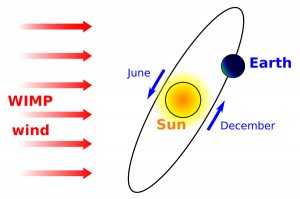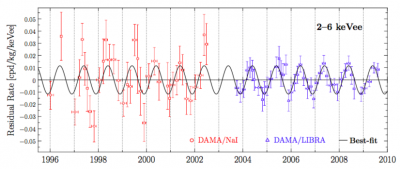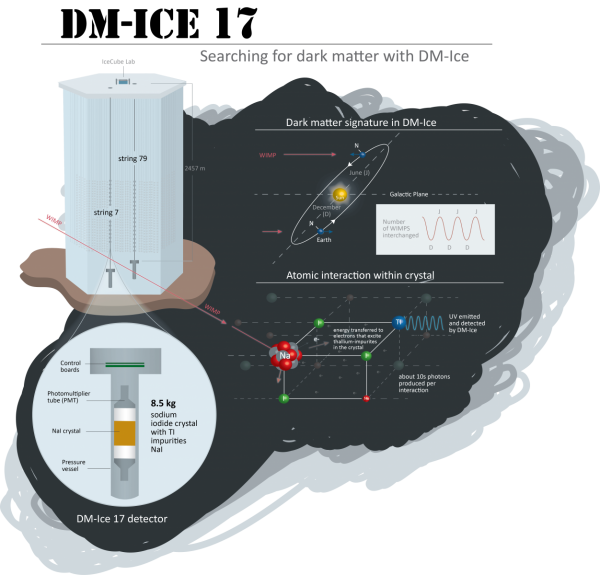We believe that most of the matter in the universe is dark, which means it cannot be detected from the light it emits. It was proposed by Fritz Zwicky in 1933, and the evidence for this dark matter has been firmly established by astrophysical and cosmological observation since then. We now know that only 5% of the universe is consists of ordinary matter, while the remainder is 27% dark matter and 68% dark energy. Identifying the nature of dark matter is the longest outstanding problem in all of modern physics.

One of the method for dark matter search is direct detection. The basic goal of the direct detection experiments is to measure the energy deposited when the dark matter interact with nuclei in a detector, transferring some oftheir energy to the nuclei. The dark matter event rate is expected to annually modulate, creating a signature c
hange in the event rate that can be used to identify it in these detector. Under commonly accepted models, galactic dark matter is distributed in a diffuse, roughly spherical halo through which the solar system travels as the Sun moves within the disk of the Milky Way. Because the relative velocity of the detector with respect to the dark matter depends on the time of the year, the count rate shows a sinusoidal dependence with time. Such a modulation would exhibit a period of one Earth year and peak when the relative velocity is at a maximum (June).

R. Bernabei et al., Eur. Phys. J., C56 (2008) 333-355.
DM-Ice is a direct detection dark matter experiment to test DAMA‘s assertion that the
observed annual modulation is due to dark matter. DAMA’s result is the longest-standing dark matter claim with NaI(Tl) target: however, the dark matter interpretation of the results are disputed because dark matter has been excluded by observations from other direct detection experiments (e.g. LUX, XENON100, SuperCDMS, EDELWEISS, ZEPLIN-III). DM-Ice aims to understand origin of DAMA’s signal by using the same target, and is the only experiment with access to both Northern and Southern Hemispheres.

Courtesy of WIPAC
DM-Ice is a phased experimental program: DM-Ice17 with 17 kg of NaI(Tl) crystals, was deployed in December 2010 at 2450 depth at South Pole. DM-Ice37 with 37 kg of NaI(Tl) is in on-going R&D status at Boulby Underground Laboratory, U.K. DM-Ice250 with 250 Kg of NaI crystals is currently under design, planned to run at Northern Hemisphere (Canfranc Underground Laboratory, France, and Y2L, South Korea). Three NaI(Tl) collaborations (ANAIS, DM-Ice, and KIMS) will share results of R&D efforts in preparation for a science run.
Recently KIMS and DM-Ice established a new joint collaboration, COSINE, and we are in the middle of effort of commissioning total of 100 Kg of NaI crystals at Y2L, Korea. The physics run has started on September 2016, and I’ve been involved in every part of the experiment in both hardware and software aspects: I’ve been leading efforts on the hardware installation, data acquisition system setup and debugging, software framework development, and the data analysis. It’s going to be amazingly exciting for next months, and stay tuned for our first physics result!
